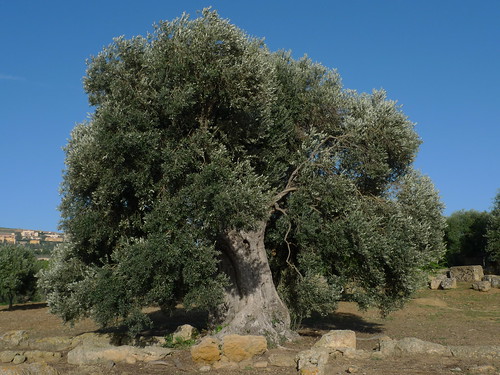
Image : http://www.flickr.com
The first directive of the Islamic faith was: to study. Intellectual achievement was spurred through this Islamic ethos.
Educational Sources
Byzantine, Persian, Jewish, Egyptian, Syrian, Chinese, Indian and Greek civilizations were overwhelmed or massacred during the Expansion of Islam.
Each of these pre-Islamic cultures - over time - had developed their particular wisdom. A few non Islamic scientists, philosophers, mathematicians and doctors survived and became subordinate to Islamic dictum. Their role was to transmit their knowledge to the Islamic society.
The rivalry of Baghdad and Cordova
Abd-ar-Rahaman 1, (the legitimate Umayyan heir) fled from Damascus 750 AD, when the Abbasids (another branch of the bloodline family) murdered most of his family, seizing leadership of the Islamic Empire. Baghdad became the Abbasidian capital.
The Abbasids assimilated the (pre-Islamic) Sassanid Empire (Persian) and Syrian cultures. Similarly, they had translated Persian, Syrian, Indian and Greek manuscripts into Arabic. These translated versions became the prime source of information.
Originally, clay tablets, parchment or Papyrus were used for translations and preserving documents.
Papyrus perished all too easily - parchment was exorbitant.
It was possessing the "secret of Paper-making" - extracted from Chinese prisoners (Battle of Talas 751 AD) - which laid the cornerstone to Islam's educational development. Paper was an excellent technique for preserving documents.
Baghdad
During al-Mansur's reign (754 to 775 AD), a library was constructed in his palace. That library was based on a blueprint of the Sassanid Imperial Library. The use of cotton-paper facilitated the reproduction of those first translations.
Thirst for Knowledge was widespread. Students and teachers frequented an ever-growing number of libraries. Bookshops, likewise, sprung-up on nearly every street corner. Library clubs attracted elite social circles: rulers, notables and learned scholars.
The House of Wisdom - Baghdad
Caliphs' Harun al-Rashid and his son al-Ma'mun (mutual reigns: 813 to 833 AD) founded the "House of Wisdom" society.
Sassanian translation for library: The House of Wisdom
The principle aim of this institute was for translation services and preservation of the transcribed works. Many eminent Muslim scholars collaborated in this society of research and education.
These libraries were the forerunners of the Moslem University in Baghdad, founded in the 11th century.
Observatories were added to the institute during al-Ma'mun's reign.
Classics studied: Aristotle, Euclid, Galen, Hippocrates, Plato, Socrates Pythagoras, Plotinus .
Specialized subjects were: mathematics, medicine, astrology, geography, zoology, and chemistry.
The House of Wisdom was destroyed by the Mongols 1258 AD.
Cordova
The rightful Umayyad heir, Abd-ar-Rahamn 1, settled in the al-Andalus capital of Cordova.
He declared himself Emir of the Independent Emirate 756 to 929 AD. Trade and commerce were needed to create stability and prosperity. Justice was the basis of Independent Emirate, sanctioning and co-existing with other religions and cultures.
Education was of supreme importance in Cordova
Abd-ar-Rahman 1, Abd-ar-Rahman 11, Abd-ar Rahman 111 and al-Hakim 11 were the most generous patrons of Cordovan educational institutes. The royal library of Cordova paralleled the House of Wisdom with its excellent collections by the time of Emir Abd-ar-Rahman 11's reign. Ransom fortunes were frequently paid for a rare manuscript. Even war prisoners were traded for books or manuscripts.
The Cordovan University was inaugurated inside the Mezquita. Scholarships were granted by Abd-ar-Rahman 111. Students travelled from all over Europe, to sit and learn from distinguished masters. There were no tables or chairs, students learned, sitting on their own mats. Libraries and hostels were constructed alongside universities. Book-collecting became a very popular hobby.
The Royal Library of Cordova was modelled on the bayt al-hikmah library of Damascus. Similar institutions were also built in Granada, Toledo and Sevilla. During the 10th century, Cordova matched Baghdad's status as the world's largest book-market. Thankfully for the students' presence, some copies of the translated works travelled abroad.
Though rivalry existed, Baghdad and Cordova Caliphates collaborated on the subject of education. Often new ideas would travel from Baghdad, either by visitors who went to study, or from masters imparting their knowledge, or vice-versa. The two Caliphates were continually stimulated with new discoveries and in-depth knowledge. Mankind had never witnessed a period of such intense learning and the seeking of truth.
For over one hundred years Cordova excelled in the Hellenic classics
Many subjects were taught in Cordova: astrology, philosophy, astronomy, history, geography, literature, poetry, surgery, medicine, architecture, calligraphy, metallurgy, mineralogy, mechanics, mathematics, meteorology, hydrostatics.
The Cordova Calender: the first agricultural/weather almanac, published in 961 AD, during the reign of al-Hakim 11, was significant in the field of irrigation and planting. Careful observation of botanical studies rendered spectacular affluence on every social level.
The studying, applying and transmitting of the collective knowledge gathered, was the cause of Moorish Spain's Golden Ages- most significantly - during the reigns of Abd-ar-Rahman 111 and al-Hakim 11.
Anne Costigan
Visit http://www.andalucia-andalusia.com/ and discover the multicultural heritage of Spain.
From Soultrean art - Andalucia, (Spain) was plundered for its silver - it became a Roman province - Germanic rule lasted two-hundred years - there were two Golden Ages: 1) Andalucia connected the Ancient world to the birth of the Renaissance, 2) Andalucia was the exit route to becoming a super-power in Discovery. All led to the wealth of the historic patrimony and architecture of Spain.